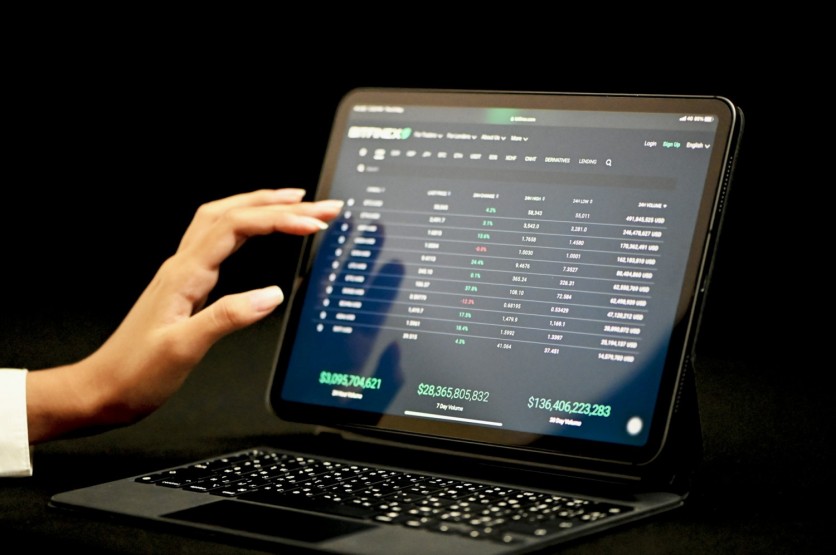
Timing is everything within the international context of crypto investment. The capacity to identify and capitalize on market cycles can imply the difference between big profits and massive losses. Crypto markets, recognized for their volatility and fast charge fluctuations, frequently pass in predictable cycles driven by a combination of factors, including investor sentiment, adoption trends, regulatory tendencies, and technological improvements. In this article, we're going to delve into the artwork of timing in crypto investment, exploring the exceptional phases of marketplace cycles, key indicators to observe, and strategies for navigating the ever-changing landscape of the crypto marketplace. Investors who prefer education over anything else can do wonders! Learn more at GPT Definity, which connects traders and educators, making education accessibility seamless.
Understanding Market Cycles
Crypto Marketplace cycles generally include four primary phases: accumulation, uptrend, distribution, and downtrend. Each segment is characterized by distinct marketplace dynamics and investor behavior, presenting unique possibilities and challenges for investors.
Accumulation: The accumulation section marks the beginning of a brand new market cycle, characterized by low prices, declining buying and selling extents, and pessimism among buyers. During this segment, smart money accumulates property at discounted expenses, constructing positions for the next uptrend. Prices can also remain stable for a prolonged period as accumulation takes place beneath the radar of most market participants.
Uptrend: The uptrend phase is characterized by growing charges, growing buying and selling extent, and growing optimism among traders. As accumulation gives way to bullish momentum, costs start to surge, attracting interest from retail investors and speculators. During this segment, media insurance will increase, and FOMO (fear of missing out) will drive expenses better. The uptrend section can close for weeks, months, or even years, depending on market conditions and outside factors.
Distribution: The distribution section happens when fees reach their peak and begin to expose signs of exhaustion. Smart money and early buyers start to sell their positions, taking income and redistributing belongings to new market individuals. Trading extent may additionally start to decline, and bullish sentiment may give way to warning and uncertainty. Distribution normally happens progressively, with expenses fluctuating within a tightening variety earlier than ultimately reversing the route.
Downtrend: The downtrend phase is characterized by declining costs, diminishing trading quantity, and tremendous pessimism amongst investors. As distribution evolves into a selling strain, costs begin to decline, triggering panic promotion and capitulation. During this phase, worry and uncertainty dominate the market, and investor sentiment reaches a nadir. The downtrend section may be quick-lived or protracted, with prices bottoming out before the beginning of a brand-new accumulation segment.
Key Indicators and Signals
Successful timing in crypto funding requires keen expertise in key indicators and indicators that can provide insights into market cycles and fashion reversals. Some commonplace signs and signals to observe include:
Moving Averages: Moving averages, including the 50-day and 200-day shifting averages, can help you become aware of trend courses, capacity guides, and resistance degrees. Golden crosses (while the quick-term shifting common crosses above the lengthy-term transferring common) and loss of life crosses (while the quick-term period moving average crosses underneath the lengthy-term transferring average) are frequently seen as bullish and bearish signals, respectively.
Relative Strength Index (RSI): The RSI is a momentum oscillator that measures the velocity and magnitude of price moves. Overbought conditions (RSI above 70) and oversold situations (RSI beneath 30) can signal capacity fashion reversals or exhaustion points.
Volume: Trading extent offers insights into the power and sustainability of price movements. Increasing extent during uptrends and decreasing volume throughout downtrends can affirm the validity of charge moves and signal ability trend continuations or reversals.
Market Sentiment: Market sentiment signs, such as the Crypto Fear and Greed Index, can gauge the prevailing sentiment among buyers and discover capacity extremes of worry or greed within the marketplace. Extreme fear can also signal a shopping for possibility, just as extreme greed can also imply an ability to market top.
Support and Resistance Levels: Support and resistance ranges are key areas on a fee chart wherein shopping for and selling pressure converge. Breakouts above resistance degrees or breakdowns below assist tiers can signal capability trend reversals or continuations.
Strategies for Navigating Market Cycles
Buy Low, Sell High: The age-vintage adage of purchasing low and selling excessive holds authentic in crypto investment. By gathering property for the duration of the accumulation segment and promoting at some point in the distribution segment, traders can capitalize on the cyclical nature of marketplace cycles and maximize earnings.
Dollar-Cost Averaging (DCA): DCA includes making an investment in a fixed quantity of capital at regular durations, no matter the marketplace situation. This approach allows easy out-of-charge volatility and decreases the effect of marketplace timing, allowing buyers to accumulate property over time at a median value.
Trend Following: Trend-following techniques involve identifying and trading inside the path of the triumphing fashion. By using transferring averages, trendlines, and momentum signs, traders can enter positions for the duration of uptrends and exit for the duration of downtrends, shooting profits along the way.
Risk Management: Effective risk control is important for navigating marketplace cycles and keeping capital. Investors have to set clean threat tolerance tiers, use stop-loss orders to restrict capability losses, and avoid over-leveraging their positions.
Conclusion
Timing is certainly an art within the world of crypto investment, and studying the art of timing calls for a combination of knowledge, revel in, and field. By knowing the distinctive phases of marketplace cycles, recognizing key signs and signals, and enforcing sound funding strategies, buyers can boost their probabilities of achievement and navigate the ever-changing landscape of the crypto marketplace with self-assurance.
ⓒ 2025 TECHTIMES.com All rights reserved. Do not reproduce without permission.





